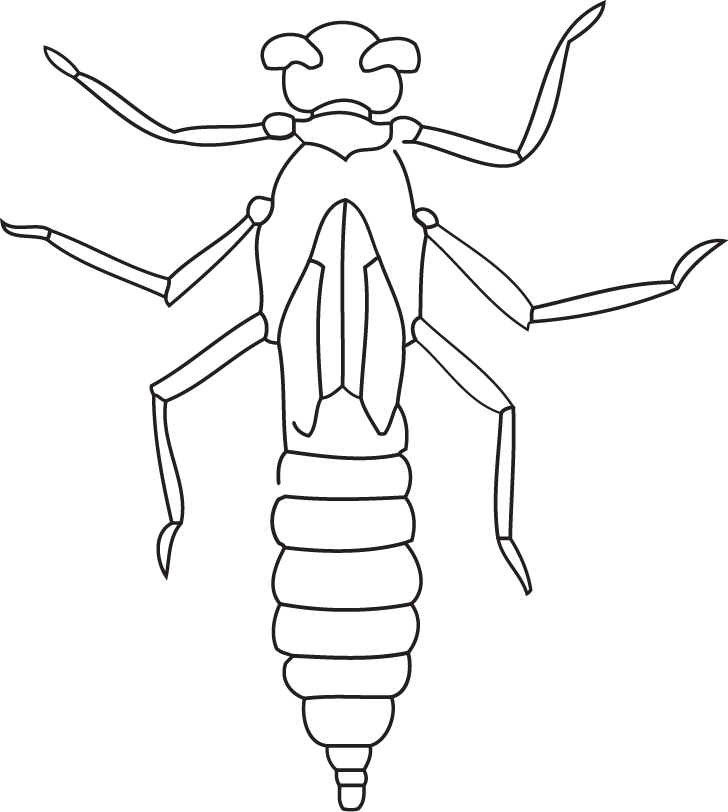Dragonfly
Source: Nature Canada
SCIENTIFIC NAME: Anisoptera
Diet/Feeding
Dragonfly nymphs are predators; feeding on insects, small crustaceans, and even fish.
Their lower lip (called a ladium) which has hooks at the tips extends outwards to capture prey.
Young nymphs sit and wait, capturing prey in their labium as it passes.
Nymphs become larger as they develop, and eventually begin to hunt for larger insects, such as mosquito larvae.
Larger nymphs can even capture small tadpoles and fish.
Adult dragonflies are also predatory, feeding on other insects including other dragonflies and spiders.
They capture prey by using their legs to form a basket and scoop up the prey out of the air while flying.
Habitat
Dragonfly nymphs are aquatic, and can be found in streams, rivers, ponds, lakes, and wetlands.
They live in areas where water is slow-moving or still.
They are likely to be found under rocks and wood.
DRAGONFLY: INTERESTING FACTS
Many species can get up to 7-8 cm long.
Fossil Dragonflies have wing spans up to 2 metres and were almost a meter in length! These giant insects were able to sustain flight because oxygen levels were far higher at this time
Dragonflies hold their wings horizontally at rest, while most damselflies hold their wings together above the body.
Dragonflies respire not only through their gills, but also through their wing pads.
Nymph dragonflies have gills inside the rear of their abdomen. They obtain oxygen by contracting their abdomen to pump water in and out of the gill chamber. By quickly expelling the water, they are pushed forward by their own 'jet propulsion' system.
Life Cycle
Dragonflies have an aquatic nymphal stage and a terrestrial adult phase.
During mating the adult male clasps the female with specialized appendages which only fit into his own specific species of dragonfly.
The entire life cycle of a dragonfly can take up to several years, the adult stage, however, lasts only a few weeks.
Role In Food Chain
Dragonfly nymphs and adults are the top predators in many aquatic food webs.
Dragonfly nymphs are active predators and consume various other invertebrates.
As adults they consume a large number of insect pests, including mosquitos.
Sources
Brusca, R. C, and Brusca, G. J., 2003. Invertebrates, 2nd ed. Sinauer Associates, Inc., Publishers, Massachusetts. Page 596.
Canada's Aquatic Environment (2002). Odonata. Available here.
DMI International Corporation (2003). LaMotte Aquatic Macroinvertebrate Insect Identification Flashcards.
The Brown Family Environmental Center at Kenyon College (2010). Dragonfly Lifecycles. Available here.
University of Minnesota; Guide to Aquatic Invertebrates of the Upper Midwest (2004). Odonata. Available here.
Nature Canada 2015. Variable Darner Dragonfly: Did you know? Available here.




